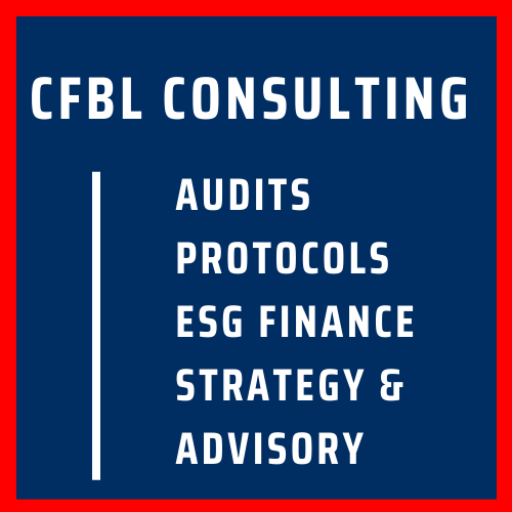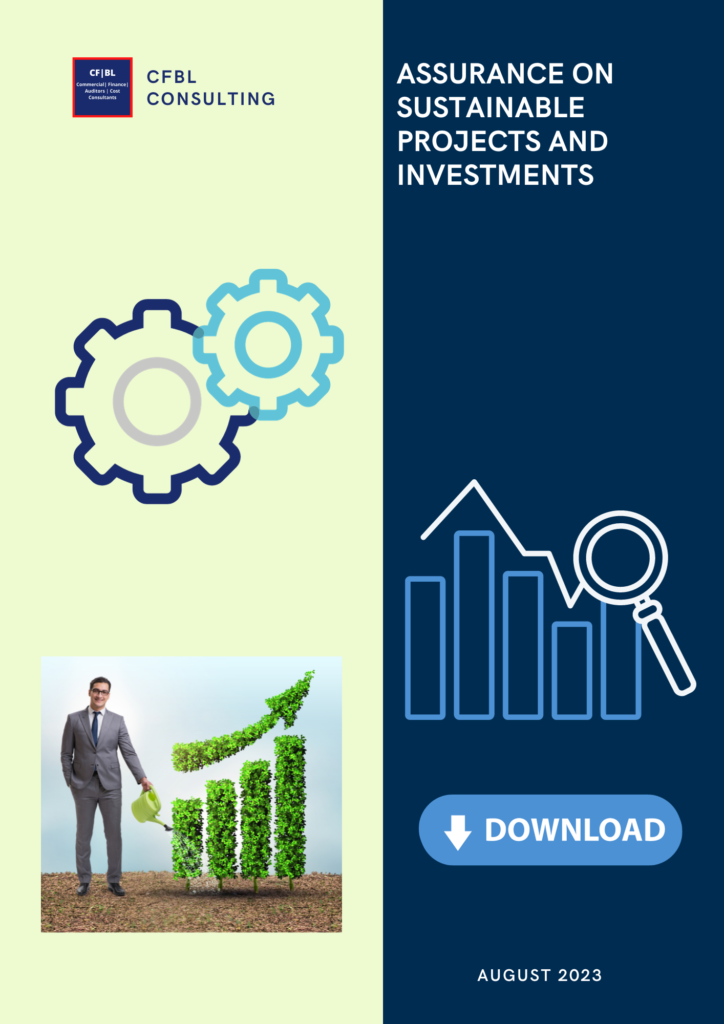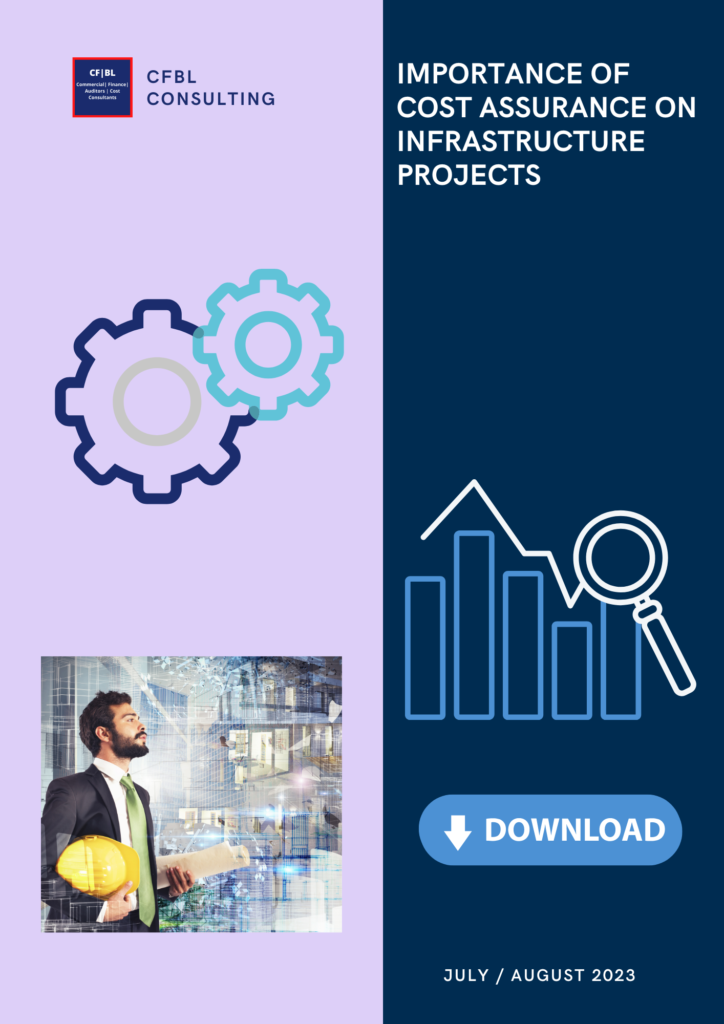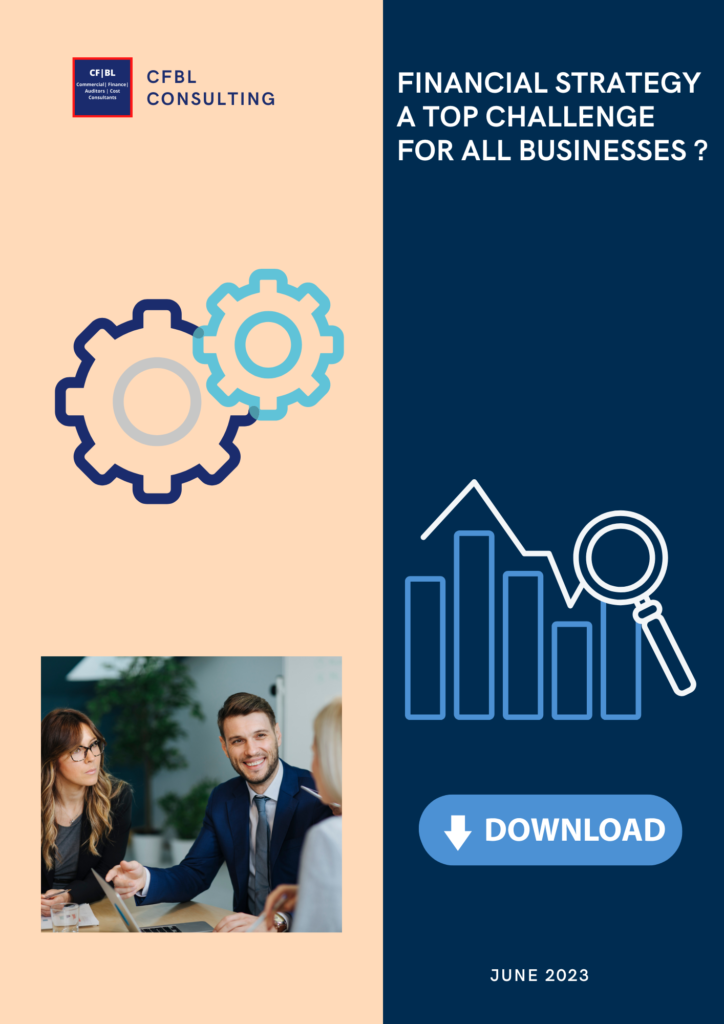Cecelia Fadipe
Commercial and Financial controls
From a recent survey just 17% of SME businesses state that they have the right formal risk management practices in place, and a staggering 42% admit that they have no formal risk management practices in place.
Overview

In this report, we explore the crucial role that commercial and financial controls play in fostering business resilience. We further examine the elements of these controls, methods for putting them into practice, and their significant influence on a company’s capacity to weather difficult times while also setting itself up for future success. Understanding the necessity of these controls is a crucial step towards the resiliency and success of a business, whether you are an experienced business leader or an aspiring entrepreneur.
Important Elements
- The capacity to adapt, endure, and flourish in the face of economic challenge is essential in today’s dynamic and increasingly uncertain corporate and business environment.
- The robustness and correct implementation and application of commercial and financial controls will often determine how resilient people, processes and control systems in a business are.
- Businesses will be able to manage risks, exploit opportunities, and preserve their financial stability based on the effectiveness of controls, which form the basis of their operating and investment activities.
- A broad range of techniques, practices, and protocols are required for the correct implementation, application and governance of commercial and financial controls.
- Controls are intended to minimise, manage risks, uncertainties and protect peoples interests. They play a crucial role in a business’s financial viability and survival.
- By incorporating academic theory and applying knowledge from experienced professionals, we provide overview of the essential elements and principles for effective and practical commercial and financial controls.
- It is essential that a business has or can access expertise capable of exercising the appropriate levels of commercial and financial controls. This significantly determines its ability to survive unforeseen difficulties, adapt to shifting conditions, and grow and remain viable for the foreseeable future.
Effective Commercial and Cost Controls

The draft companies regulations was presented to Parliament on 19th July From 2025 it will require very large companies (with over 750 staff and turnover of £750m to explain risks, resilience , profits , actions taken to prevent major fraud and assurance of its corporate reporting.
Controls for Commercial Resilience
- Cost management is a key element of commercial controls that seeks to help ensure that businesses can withstand challenges and maintain financial stability.
- In this report we identify some primary cost control techniques below can help businesses become more commercially resilient.
- Market research and analysis helps monitor consumer behaviour, market trends, and competitive environment for better data led decision making.
- Market research can also reveal specialised markets, unexplored markets, unmet consumer requirements, or underserved or untapped markets.
- Finding these options and implementing a diversification strategy can help reduce reliance on a single market and by diversifying revenue streams.
Effective Customer Management
- Implementing a Customer Relationship Management (CRM) system to oversee customer contacts, monitor sales, and manage crucial commercial information.
- In delivering services effective customer satisfaction and high-levels of customer retention can be enhanced by a well-maintained and managed CRM.
- Additionally, it helps by by creating a thorough picture of each consumer, taking into account past commercial and non-commercial interactions with your company.
- Having this in place makes it possible for your commercial, and technical staff to develop strategic relationships and offer trusted specialised services.
- Investing in and improving strategies for sales and marketing to successfully reach target audiences and allow return on investment on marketing initiatives.
Supply Chain and Transformative Resilience

To remain competitive the treatment of technological, environmental and social factors are a clear indication of future resilience. The same is true of leaders who use data-led insight to inform their future decisions.
Supply Chain Risks
- In addition to negative impact on a company’s operations, a significant incident’s severe interruption may also have an adverse impact on suppliers and clients, which may have repercussions further down the supply chain.
- Similarly, a formulated and implemented business continuity plan will increase the likelihood that a company has control systems in place to ensure that operations are uninterrupted during a crisis and the quick recovery of systems that fail as a result.
- Companies cannot predict or prepare for every conceivable scenario. To understand commercial risk they should however perceive the “big picture” to understand the variables and constraints that must be considered when managing projects.
Transformative Resilience
- Businesses are under pressure to be flexible and innovative due to increased consumer expectations and amidst growing competition.
- A well-established business should be able to expand into new markets, gain new customers, and leverage technology deliver real-time capabilities. This includes access to more accurate data to inform future decisions and using digital to connect with a targeted engaged consumers. This can now be done globally thanks to advancements in new technology.
- For example businesses in the financial services sector are investing heavily in new technologies to replace the infrastructure and technology applications that support the traditional or old ways of working and delivery to fulfil these demands.
Ensuring Continuity and Assuring Resilience

Importantly segregation of duties, timesheets, overtime, invoices and expense approvals before payment are key commercial controls that are vital for controlling costs, minimising commercial risks and preventing fraud.
SME Financial Resilience
- We have examined the types of businesses that are more likely to be resilient, but what makes a resilient business unique in terms of its priorities and course of actions? As already observed, there is a direct correlation between financial success and resilience.
- This might lead us to draw the conclusion that a profitable business is one that is constantly seeking new clients and ways to optimise expenses is one that is resilient. That must make sense if these are the businesses that are most stable financially.
- When specifically asked in a poll, SMEs ranked the following in order of how essential it would be to them personally to achieve during the upcoming 12 months. While just 29% of “high resilience” organisations did so, 37% of “low resilience” enterprises ranked “increasing revenue and profits” as their top objective.
Assuring Future Resilience
- In today’s past paced environment, delivering business value quickly and consistently is more important than simply ensuring its quality. Businesses must be able to pivot and necessary changes made swiftly without endangering business continuity.
- Continuous costs and quality engineering, which begins by incorporating multiple quality measurements from the outset of project delivery activities and throughout the lifecycle of projects can be used to achieve this resilience.
- By continuously testing, deploying cutting-edge technology and using automation frameworks and leveraging modern research methods like AI should help with assurance of resilience. Ultimately when delivered strategically these will generate the certainty that intended commercial value is possible.
Risks and Dynamic Operating Environments

Only 76% of leaders asked were positive about their financial resilience. Economic losses from catastrophic risks versus valueinsured were 62%. The protection gap in cyber risk is 90% with losses of over $1.5tr.
Socio-Economic and Emerging Risks
- Resilience is becoming an incredibly vital requirement for future performance in an unpredictable world.
- The COVID-19 epidemic had a devastating effect on human health and left tremendous financial shocks.
- The crisis has starkly illustrated how vulnerable industries are to supply chain disruptions and how sensitive economies are to demand shocks.
- The pandemic also spread in a period marked by accelerated climate change awareness and a rising sense of urgency to reduce greenhouse gas emissions.
- Businesses are contending with business obstacles such as societal uncertainty, geopolitical tensions, public health, and environmental constraints.
- Accelerating digitisation, cyber threats, inflation, and price volatility are some of the disruptive currents that are difficult to anticipate due to the dynamic rate of change as their severity and frequency increases.
Dynamic Operating Environments
- The executives admitted that in the past, a small number of clearly defined risks, mainly financial were the focus of their risk management efforts
- They stated that today, the scope of risk management has been greatly expanded to include socio-economic and geo-political business risks.
- Leading organisations integrate emerging risks in the development of their long-term strategies and forecasts to aid the business in navigating a much more dynamic and volatile operating environment.
- Nearly 60% of those surveyed believe that their companies have excellent or very good resilience strategies, which means they are well suited to develop and manage resilience on a broad scale.
- That is partly as a result of the pandemic, which expanded many leaders’ perspectives on risk identification and importance of risk management functions far beyond one or two particular hazards.
Role of Finance in Cashflow Management

SMEs represent 90% of businesses globally but many lack resources to fully implement controls while on large complex projects, the potential to fully realise value from controls of funded contracts is challenging”.
Role of the Finance Function
- Corporate resilience is about making sure that operations continue as usual in the event of an emergency or the unexpected catastrophe.
- Functional resilience is essential to any business continuity plan in many ways.
- One of the most important control functions for all organisations is the finance department and its primary role of control and governance.
- This covers several aspects of financial control covered, including procurement, purchasing management, vendor management, credit management and cash flow management.
- After all, no business can endure as a going concern without consistent cash flow and cash proactive cash flow management.
- Management of financial risk has always been essential to preserving an organization’s worth.
- Effective risk management techniques can reduce the sources of volatility.
Cashflow Management
- Businesses should have access to skilled expertise, effective controls, efficient processes and reliable systems.
- This includes the appropriate technology and contingency plans in place in preparation for extraordinary events, to ensure sustainability of future operations.
- Organisations are considering whether their structure enabled them to respond appropriately to recent events and whether they had the necessary agility.
- Following the crisis, businesses in a variety of industries now have a greater knowledge of the risk of running out of cash.
- Throughout cash has remained kind and many businesses are now regularly updating their forecasts liquidity plans and working capital policies.
- This that means revaluating forecasting procedures, examining the efficacy of current liquidity stress testing and early warning indicator systems are some of the most efficient ways to manage liquidity risks.
Liquidity Management in Construction

Over 50% of private sector workforce are employed by the 99% of SMEs across several communities. In the UK businesses are an essential part of cashflow in the communities in which they operate which rely on them employing several locals and providing essential goods or services.
Liquidity Management
- Early identification and measurement of liquidity risk should be supported by a comprehensive framework for managing such risks.
- In environments of intense competition and low profitability, each construction company’s operations are subject to a variety of risks.
- Lower fees and profitability make it challenging to maintain a strong financial liquidity position and this has seen the recent spate of high profile construction companies going into administration.
- Businesses are compelled to construct the best financial management strategies in order to maintain the continuity of ongoing operations, processes and to allow them to scale and grow.
- Businesses can choose to adopt a conservative, moderate, or aggressive strategy, which is largely dependent on how well they can manage their short-term liabilities and current assets.
The Construction Sector
- The fact that construction companies are particularly susceptible to changes in the macroeconomic environment and fluctuations in the economic situation, which affect the availability of finances, is also significant in this case.
- In order to fund new projects, to keep ongoing projects moving forward, pay for supplies and labour, and cover other operating expenses, businesses in the construction sector require a steady cash flow.
- For some construction companies, one or two instances of late or missed payments from clients, an inventory overstock, or a sudden increase in the cost of materials is all it takes to put them at risk of a financial shortage, or worse still liquidity risks.
- A company will more accurately forecast its needs, identify potential issues, and eventually aid in its growth by keeping a close eye on its cash flow and maintaining a much needed buffer of cash reserves for resilience in challenging times when shocks will occur.
Capital Structure and Diversification

Infrastructure investment needs are forecast to reach $94tn by 2040 to keep up with global changes a further $3.5tn is required to meet United Nations SDGs for electricity and water.
Capital Structure
- The capital structure should enable a company to capitalise on potential investment opportunities and respond quickly and robustly in times of crisis.
- It should also support the delivery of planned internal and external projects for strategic transformation and growth.
- Several companies are re-evaluating their investment and capital structures in reaction to recent unpredictability in the global markets.
- Instead of fundamentally altering the structure or piling on more debt, this involves examining alternate sources for diversity and flexibility.
- Diversifying sources, markets, and instrument types are all part of this. The distribution of capital is also being thought about.
Distribution and Diversification
- Emphasis is on directing funds towards strengthening resilience of the company model as markets prepare for the worst in 2024.
- A clear prevalence of short-term borrowed capital and the extraordinarily high financial leverage of the majority of businesses are indicators of the economy’s overall instability.
- This could result in significant losses and possible bankruptcies in the near future. Some companies have already began cost reductions and layoffs.
- The increase in acquisition of smaller, more stable businesses by larger businesses or the merger of multiple businesses are also developing scenarios.
- The study of the ideal debt-to-own capital ratio in the context of building project execution dynamics may be the focus of future research.
Investment Risks and Agile Approaches

According to a recent survey conducted in October 2023, 90% of businesses across industries believe that the disruption of global supply chains will continue to have an ongoing effect on their financial resilience and operations.
Investment Analysis
- The quantitative study of a company’s investment potential is the first step in financial analysis, but in challenging times, extra caution is needed.
- The classic Net Present Value (NPV) calculations, is most commonly used in investment evaluation, and establishing the viability of a project.
- First made popular by Dean, it uses the assumption that a manager cannot adjust the initial commitment of resources to change future cash flows after an investment has been made.
- Although these techniques are still taught today, flexibility is still disregarded. On the contrary many investments are active investments, meaning that they can be changed after being made.
- When past predictions of future conditions turn out to be inaccurate, managers can and do take action to change the size and form of cash flows after initial investment commitments have been made.
Risks and Agile Approaches
- Real Option Theory shifts away from the NPV assumption of a passive manager who ceases to act once an investment decision is made.
- This shift is towards the assumption of active management, which allows managers to enact changes in resource commitments after initial investment, to reflect the market volatility, risk of inaction and value from potential adjustments.
- According to this new perspective, an investment opportunity’s entire NPV can be calculated by adding these two elements: 1. The NPV in the unrevised state + 2. The NPV that is related to the potential commitment adjustments.
- Moreover, during periods of economic uncertainty, businesses with core capabilities and foresight can prosper. Only those who can adapt to economic changes will survive. Agile businesses can pivot in response to economic changes and leverage opportunities while maintaining key competencies.
Frequently Asked Questions

In a recent poll on commercial controls respondents identified the top three risks of increasing levels of supply chain collaboration to be lack of ownership of risks 39%, increased project complexity 30% and unethical business practices 24%.
1. How do commercial and financial controls relate to the resilience of businesses?
A. The techniques and tactics used by businesses to manage and optimise their operations, resources, and financial activities are known as commercial and financial controls. These controls are crucial for establishing corporate resilience because they give employees the resources they need to adjust to shifting conditions, reduce risks, and take advantage of opportunities. They are crucial for preserving the company’s stability and financial health.
2. What are some instances where commercial controls enhances company resilience?
A: Commercial controls may cover a variety of topics, such as customer relationship management, supply chain diversification, sales forecasting, and inventory management. In order to maintain operations, these controls assist a company in adapting to changes in the market and unanticipated disruptions. A business continuity strategy was implemented by 67% of businesses in response to the COVID-19 pandemic.
3. How can financial controls help businesses maintain their resilience?
A: Budgeting, cash flow management, risk assessment, and financial reporting are all components of financial controls. They are crucial for preserving financial stability and adaptability in trying times and for seizing operating and capex investment opportunities which can be major source of competitive advantage when they present themselves.
4. Do you have an example of commercial and financial controls affecting business resilience?
A: Examples of financial controls include maintaining an emergency fund or a line of credit to cover unexpected expenses, regularly reviewing financial statements to identify potential issues early, and diversifying investments to minimise risk. An example is Buckingham Group which went into administration in August due to rapidly escalating contract losses and a sharp reduction in liquidity.
5. Can SMEs benefit from these rules, or are they only applicable to large corporations?
A: For businesses of all sizes, business resilience is crucial. Small businesses can also employ commercial and financial controls to better react to difficulties and assure their continued success, however, the scale and complexity of controls may differ. It involves adjusting controls to the particular risks and needs of a business.
6. How can a business determine the commercial and financial controls best for its unique situation?
A. It begins with a comprehensive SWOT analysis of your company’s strengths, weaknesses, opportunities, and threats. Consider seeking advice from financial specialists or consultants who can assist in determining the most pertinent controls for your sector and company size.
7. What part does technology play in implementing business resilience controls in place?
A: The efficiency and effectiveness of commercial and financial controls can be considerably improved by technology.
Tools including accounting software, customer relationship management programs, and data analytics platforms help speed up the adoption of controls, data analysis and offer real-time information. These can significantly help leaders and businesses with making better data led decisions in future.
8. How frequently should a company audit and revise its financial and commercial controls?
A: Regular assessments are essential. Controls must evolve with the business or project environment as conditions change. Many companies undertake quarterly or annual reviews. Some others especially those in high risk or fast moving sectors, where conditions can change very quickly, may require more frequent reviews and audits.
9. When establishing these controls, are there any legal or regulatory considerations?
A: Yes, it is essential to comply with applicable laws and regulations, especially in the financial sector. To be compliant, make sure your controls are in line with legal and industry standards and update them frequently.
References
- Advertisement. (1976). Environmental Science & Technology, 10(12), pp.1108–1108. doi:https://doi.org/10.1021/es60122a905.
- Eklind, M. and Al-Halwachi, J. (n.d.). Sustainability Assurance a Qualitative Study Exploring the Assurance process, Team and Report of Sustainability Assurance. [online] Available at: https://www.diva-portal.org/smash/get/diva2:1441658/FULLTEXT01.pdf.
- Environment, U.N. (2017). Why does resource efficiency matter? [online] UNEP – UN Environment Programme. Available at: https://www.unep.org/explore-topics/resource-efficiency/why-does-resource-efficiency-matter.
- IFAC. (2021). The State of Play in Sustainability Assurance. [online] Available at: https://www.ifac.org/knowledge-gateway/contributing-global-economy/discussion/state-play-sustainability-assurance.
- www.apm.org.uk. (n.d.). Why inclusion matters in sustainable projects. [online] Available at: https://www.apm.org.uk/blog/why-inclusion-matters-in-sustainable-projects/.
- www.betterevaluation.org. (n.d.). Monitoring and evaluation for impact investing | Better Evaluation. [online] Available at: https://www.betterevaluation.org/methods-approaches/themes/monitoring-evaluation-for-impact-investing [Accessed 31 Aug. 2023].
- www.integratedreporting.org. (n.d.). The Growing Momentum for Integrated reporting: Part 1 | Integrated Reporting. [online] Available at: https://www.integratedreporting.org/news/the-growing-momentum-for-integrated-reporting-part-1/
- https://www.oecd.org/finance/ESG-Investing-Practices-Progress-Challenges.pdf
- https://www.apm.org.uk/blog/why-inclusion-matters-in-sustainable-projects/
the construction SECTOR




